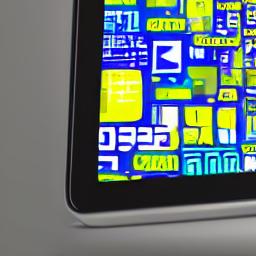In the digital age, new technologies constantly emerge, changing the way we interact with the world. One of the latest buzzwords in this tech-driven era is NFTs. But what exactly are NFTs?
NFT stands for Non-Fungible Token. To break this down, we first need to understand what “fungible” means. Something that is fungible can be exchanged on a one-to-one basis because each unit is the same as any other. For example, one dollar is equivalent to another dollar. In contrast, something non-fungible is unique and cannot be exchanged on a one-to-one basis. Think of a rare baseball card or a unique piece of art – each has its own distinct value.
NFTs are essentially digital assets that represent ownership or proof of authenticity for unique items, verified through blockchain technology. Blockchain is a decentralized digital ledger that records transactions across many computers, ensuring that the data is secure and tamper-proof.

So what makes NFTs special? Here are some key features:
1. **Uniqueness**: Each NFT has distinct information or attributes that make it unique. These attributes are what give the NFT its value and cannot be duplicated or exchanged on a one-to-one basis like regular digital currency.
2. **Ownership**: NFTs provide proof of ownership. When you buy an NFT, you’re purchasing a verified digital certificate saying that you are the owner of this unique digital item. This is recorded on the blockchain, making it transparent and verifiable by anyone.
3. **Transferable**: NFTs can be bought, sold, and traded on various digital marketplaces. They make it possible to own and transfer digital assets in a way that wasn’t possible before.
But what kind of items can be NFTs? The possibilities are nearly endless. They can be digital art, music, videos, virtual real estate, in-game items, and even tweets. Essentially, anything digital can potentially be turned into an NFT.
Imagine you are an artist and you create a digital painting. Before NFTs, it would have been challenging to prove ownership or the authenticity of the digital artwork. However, by minting your digital painting as an NFT, you create a verifiable record of ownership and authenticity on the blockchain. This NFT can then be sold or auctioned, allowing you to profit from your digital creation.
Collectors value NFTs similarly to how they value traditional collectibles. They may seek them out for their rarity, aesthetic appeal, or potential to increase in value over time. For instance, a one-of-a-kind digital artwork by a famous artist might fetch a high price because of its uniqueness and the artist’s reputation.
While NFTs have exciting potential, it’s also important to be aware of the risks and criticisms. The market for NFTs can be very volatile, with prices fluctuating significantly. There have also been concerns about the environmental impact of blockchain technology, as the process of verifying transactions can require significant amounts of energy.
In conclusion, NFTs are transforming the way we think about digital ownership and value. By leveraging blockchain technology, they provide a way to prove the uniqueness and ownership of digital items, opening up new possibilities for artists, collectors, and creators. As with any new technology, it’s important to do your research and approach it with an informed perspective. Whether you’re an artist looking to monetize your digital work or a collector searching for unique digital assets, NFTs are an exciting development worth exploring.
